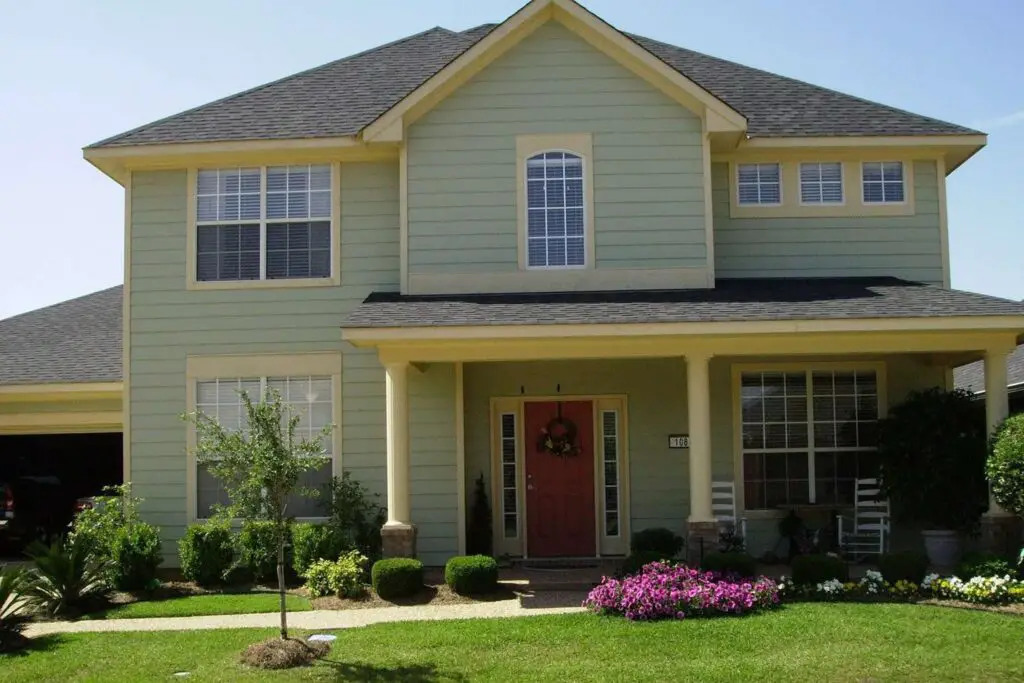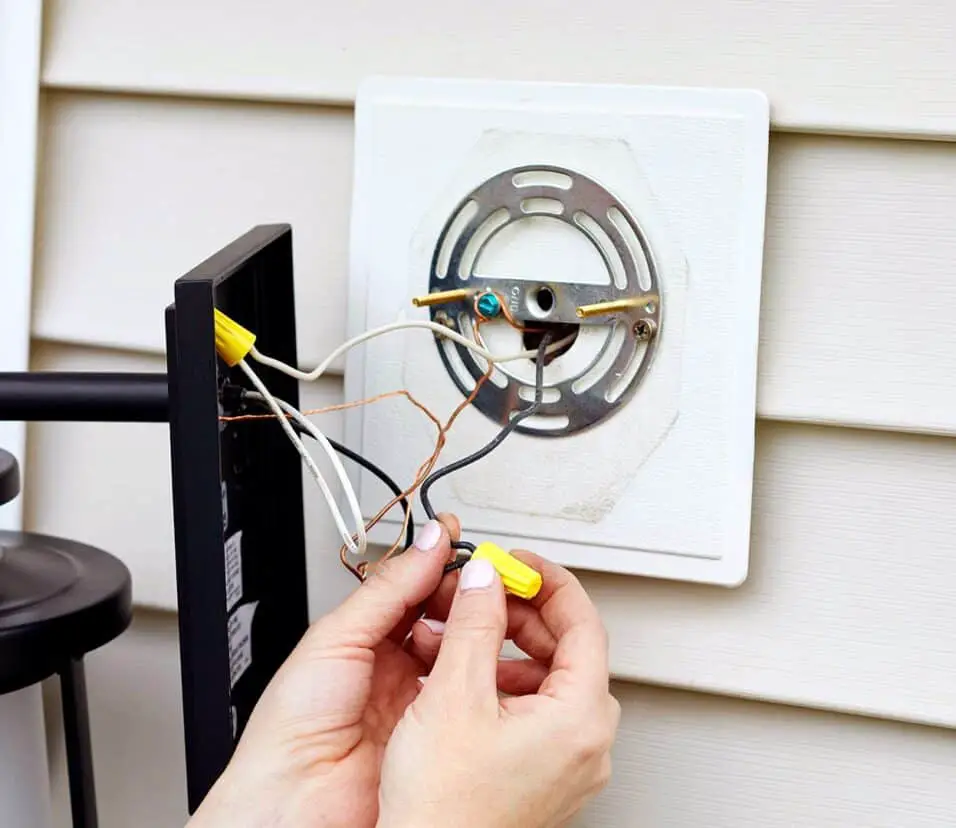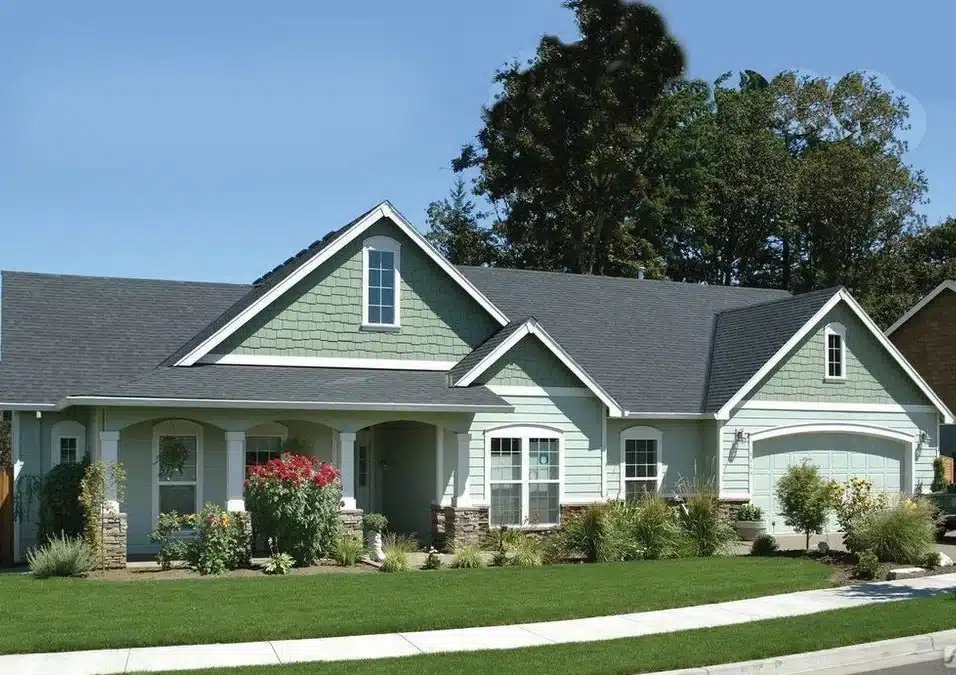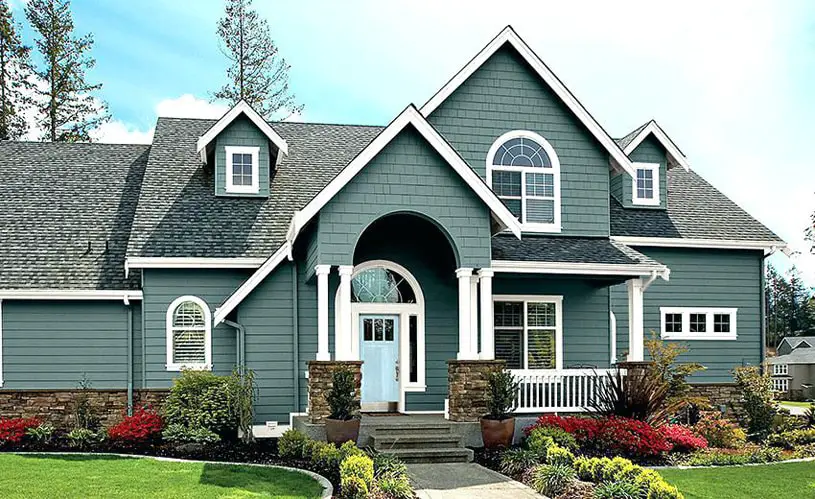How To Remove Flaking Paint From Exterior Walls
Introduction
How To Remove Flaking Paint From Exterior Walls: Flaking paint on exterior walls can be a frustrating and unsightly problem for homeowners. Not only does it detract from the overall appearance of your home, but it can also lead to further damage if left untreated. Fortunately, there are several methods you can use to remove flaking paint and restore the beauty of your exterior walls.
One of the first steps in removing flaking paint is to assess the extent of the damage. This will help you determine the best course of action for removing the exterior paint.
If the paint is peeling in small patches, you may be able to remove it using a scraper or wire brush. Start by gently scraping away the loose paint, being careful not to damage the underlying surface. Once you have removed as much loose paint as possible, sand the area to create a smooth surface for repainting.
For larger sections of flaking paint, you may need to use a power washer or chemical paint stripper. A power washer can be an effective tool for removing paint from exterior walls, but it should be used with caution to avoid damaging the surface. Chemical paint strippers can also be effective, but they should be used in a well-ventilated area and with the proper safety precautions.

How do you remove flaking paint from outside walls?
Scraping. A sharp, rigid putty knife or a blade designed for paint scraping is sometimes the best way to remove paint. Dust is still there, but it’s minimized and you have better control than if you used a sander. If the structure has very loose or alligatored paint, scraping might just be the best option.
Removing flaking paint from outside walls can be a challenging task, but with the right tools and techniques, it can be done effectively. Flaking paint not only looks unsightly, but it can also lead to further damage if left untreated. Whether you are planning to repaint the walls or simply want to improve the appearance of your home, here are some steps you can follow to remove flaking paint from outside walls.
1. Prepare the area: Before you begin the paint removal process, it is important to prepare the area properly. This includes removing any loose debris or dirt from the walls and covering nearby plants or furniture to protect them from any potential damage.
2. Scrape off loose paint: Be careful not to apply too much pressure, as this can damage the underlying surface. It is important to wear protective gloves and goggles during this step to avoid any injuries.
3. Sand the surface:
After removing the loose paint, use sandpaper or a sanding block to smooth out the surface. This will help to create a clean and even base for the new paint. Start with a coarse-grit sandpaper and gradually move to a finer grit for a smoother finish.
5. Apply primer: Before applying a fresh coat of paint, it is recommended to apply a primer to the walls. This will help the new paint adhere better and provide a more durable finish. Choose a primer that is suitable for exterior surfaces and follow the manufacturer’s instructions for application.
What is the fastest way to remove exterior paint?
Orbital (rotating) or belt sanders are a good option for stripping exterior paint. Sanders rip off the paint quickly. However, if you lay into the sander too hard, you risk gouging the wood.
Removing exterior paint can be a time-consuming and labor-intensive task. However, there are several methods that can help speed up the process and make it more efficient. Whether you are looking to repaint your home or simply want to remove old, peeling paint, finding the fastest way to remove exterior paint is essential.
One of the fastest methods to remove exterior paint is by using a pressure washer. A pressure washer uses a high-pressure stream of water to blast away paint from surfaces. This method is particularly effective for removing loose or peeling paint, as well as dirt and grime that may have accumulated over time. It is important to note that a pressure washer should be used with caution, as it can damage certain surfaces if not used properly. It is recommended to start with a low-pressure setting and gradually increase the pressure as needed.
Electric Sanders
Another fast and effective method for removing exterior paint is by using a heat gun. A heat gun works by applying heat to the paint, causing it to soften and bubble up, making it easier to scrape off. This method is particularly useful for removing stubborn or multiple layers of paint. However, it is important to exercise caution when using a heat gun, as it can cause burns or damage to the surface if not used properly. It is recommended to wear protective gloves and goggles and to keep the heat gun moving at all times to avoid overheating the surface.
Chemical paint strippers are also a popular choice for removing exterior paint quickly. These strippers work by breaking down the chemical bonds in the paint, making it easier to scrape off. They are available in both liquid and gel forms and can be applied with a brush or roller. It is important to follow the manufacturer’s instructions when using chemical paint strippers, as they can be toxic and should be used in a well-ventilated area. Additionally, it is recommended to wear protective gloves and goggles to avoid contact with the skin or eyes.
Why does paint flake off exterior walls?
The primary reason responsible for early peeling is the moisture that gets trapped in the walls or ceilings. Bathroom walls and ceilings, exterior walls, etc., are also prone to peel-off issues due to water, suggests waterproofing experts.
Paint flaking off exterior walls is a common problem that many homeowners face. It can be frustrating to see the paint on your walls deteriorate and peel away, leaving behind unsightly patches. There are several reasons why paint may flake off exterior walls, and understanding these causes can help you prevent and address the issue effectively.
One of the main reasons for paint flaking off exterior walls is moisture. When water seeps into the walls, it can cause the paint to lose its adhesion and peel away. This can happen due to various factors, such as rainwater, high humidity levels, or improper drainage systems. When moisture gets trapped behind the paint, it creates a barrier that prevents the paint from adhering properly to the surface, leading to flaking.
PAINT PEEL-OFF DUE TO WATER
Another common cause of paint flaking is poor surface preparation. If the walls are not properly cleaned, primed, and prepared before painting, the paint may not adhere well to the surface. Dust, dirt, and loose particles can prevent the paint from bonding with the wall, causing it to flake off over time. It is essential to thoroughly clean and prepare the walls before applying paint to ensure proper adhesion and longevity.
Furthermore, using low-quality or incompatible paint can also contribute to paint flaking. Cheap paints may not have the necessary adhesion properties, causing them to peel away easily. Additionally, using the wrong type of paint for the specific surface or environmental conditions can lead to flaking. For example, using interior paint on exterior walls or using oil-based paint on a surface that requires latex paint can result in poor adhesion and eventual flaking.
Inadequate maintenance and exposure to harsh weather conditions can also cause paint to flake off exterior walls. Over time, the sun’s UV rays, extreme temperatures, and moisture can degrade the paint’s protective properties, causing it to crack and peel. Regular maintenance, such as repainting and sealing, can help protect the paint and prevent flaking.
Can I paint over peeling exterior paint?
Can I Paint Over Exterior Peeling Paint. No! Painting over peeling paint doesn’t result in a smooth and professional finish. You need to strip and scrape the paint before priming and painting the surface.
Yes, it is possible to paint over peeling exterior paint. However, it is important to properly prepare the surface before applying a new coat of paint to ensure a long-lasting and smooth finish. Peeling paint can be caused by various factors such as moisture, age, or improper application. If not addressed, peeling paint can lead to further damage to the underlying surface.
Firstly, it is crucial to identify the cause of the peeling paint. If the peeling is due to moisture or water damage, it is important to address the source of the problem before repainting. This may involve fixing leaks, improving drainage, or repairing any damaged areas. Ignoring the underlying issue can result in the new paint peeling again in the future.
Secondly, the peeling paint should be removed or scraped off.
This can be done using a scraper or a wire brush. It is important to wear protective gear such as gloves and goggles while doing this to avoid any injuries. The goal is to create a smooth and even surface for the new paint to adhere to.
Thirdly, after removing the peeling paint, the surface should be cleaned thoroughly. This can be done using a mild detergent and water solution. Any dirt, dust, or loose particles should be removed to ensure proper adhesion of the new paint.
Finally, the surface should be primed before applying the new coat of paint. Primer helps to seal the surface and provides a better base for the paint to adhere to. It also helps to prevent future peeling or flaking. Choose a primer that is suitable for the type of surface and the type of paint you will be using.
What is the best paint to stop peeling?
I always use an exterior grade primer when dealing with an area prone to peeling,’ shares Matthew Stone. A good option is Zinsser Peel Stop Primer from Amazon, which is suitable for indoor and outdoor use.
When it comes to preventing peeling paint, choosing the right type of paint is crucial. The best paint to stop peeling is one that is specifically designed for this purpose. There are several factors to consider when selecting the right paint, including the surface you are painting, the underlying cause of the peeling, and the environment in which the paint will be applied.
Apply a quality prime
One of the most important factors to consider when choosing paint to prevent peeling is the surface you are painting. Different surfaces require different types of paint. For example, if you are painting a wooden surface, you will need a paint that is specifically formulated for wood. This type of paint will adhere better to the surface and provide better protection against peeling. On the other hand, if you are painting a metal surface, you will need a paint that is designed to adhere to metal and provide protection against rust and corrosion.
The underlying cause of the peeling paint should also be taken into consideration when selecting the best paint. If the peeling is due to moisture or water damage, it is important to choose a paint that is moisture-resistant and can withstand exposure to water. If the peeling is caused by poor adhesion, a paint with strong adhesion properties should be used. By addressing the underlying cause of the peeling, you can prevent future peeling and ensure that the paint lasts longer.
The environment in which the paint will be applied is another important factor to consider. If the paint will be exposed to extreme temperatures, UV rays, or high humidity, it is important to choose a paint that is specifically designed to withstand these conditions. For example, if you are painting an exterior surface that will be exposed to sunlight.
A paint with UV protection will help prevent fading and peeling.
The best paint to stop peeling is one that is specifically designed for the surface you are painting, addresses the underlying cause of the peeling, and can withstand the environmental conditions it will be exposed to. By choosing the right paint, you can prevent peeling and ensure that your paint job lasts longer.
When it comes to removing flaking paint from exterior walls, there are several effective methods that can be employed. One popular method is power washing, which involves using a high-pressure water spray to remove the loose paint. This method is particularly useful for larger areas with extensive flaking. Another effective method is scraping, where a paint scraper or putty knife is used to physically remove the flaking paint. This method is best suited for smaller areas or spots where power washing may not be feasible.
Additionally, sanding can be used to remove flaking paint from exterior walls. This method involves using sandpaper or a sanding block to smooth out the surface and remove the loose paint. It is important to note that sanding can be time-consuming and may require more effort compared to power washing or scraping. Chemical paint strippers are another option for removing flaking paint. These products work by softening the paint, making it easier to scrape or wash off. However, it is crucial to follow the manufacturer’s instructions and take necessary safety precautions when using chemical paint strippers.
Are there any specific tools or products that can help with the removal process?
When it comes to removing flaking paint from exterior walls, there are several specific tools and products that can greatly assist in the process. One of the most commonly used tools is a paint scraper, which is designed to effectively scrape away loose and flaking paint from the surface of the walls. It is important to choose a scraper with a sharp blade and a comfortable handle for ease of use.
In addition to a paint scraper, a heat gun can also be a valuable tool for removing flaking paint. By applying heat to the paint, it softens and becomes easier to scrape off. However, caution should be exercised when using a heat gun to avoid damaging the underlying surface or causing a fire hazard. It is important to follow the manufacturer’s instructions and use the heat gun at a safe distance from the wall.
Are there any safety precautions that should be taken when removing flaking paint from exterior walls?
When removing flaking paint from exterior walls, it is important to prioritize safety to avoid any potential hazards. Here are some essential safety precautions that should be taken:
1. Wear protective clothing and gear: Before starting the paint removal process, it is crucial to wear appropriate protective clothing such as long sleeves, pants, gloves, and safety goggles. This will help protect your skin and eyes from any potential contact with chemicals or paint chips.
2. Use a respirator: Since the removal process may involve the release of dust and fumes, it is recommended to wear a respirator to prevent inhalation of harmful particles. Look for a respirator that is specifically designed for paint removal and ensure it fits properly.
3. Work in a well-ventilated area: It is important to work in a well-ventilated area to minimize the concentration of fumes and dust. Open windows and doors, or use fans to improve air circulation. If working indoors, consider using exhaust fans or air purifiers to maintain good air quality.
4. Use safe paint removal methods: Choose paint removal methods that are safe and minimize the risk of fire or chemical exposure. Avoid using open flames or heat guns, as they can release toxic fumes and pose a fire hazard. Instead, opt for safer methods such as scraping, sanding, or using chemical paint strippers.
5. Dispose of paint chips properly: Collect and dispose of paint chips in a safe manner to prevent environmental contamination. Avoid sweeping or blowing the chips, as this can spread them further. Instead, carefully collect them using a dustpan and dispose of them according to local regulations.
By following these safety precautions, you can ensure a safer paint removal process and minimize any potential risks to yourself and the environment.
How can one ensure that the removal process does not damage the underlying surface of the walls?
When removing flaking paint from exterior walls, it is important to take certain precautions to ensure that the underlying surface is not damaged in the process. One effective method is to start by gently scraping off the loose and flaking paint using a putty knife or a paint scraper. It is important to be careful and avoid applying too much pressure, as this can cause damage to the surface. Additionally, using a heat gun or a paint stripper can help soften the paint and make it easier to remove without causing any harm to the underlying surface.
Another important step is to use the right type of abrasive material for the removal process. Sandpaper or a sanding block can be used to smooth out any remaining paint or rough spots, but it is crucial to choose the appropriate grit size to avoid scratching or damaging the surface. Starting with a finer grit and gradually moving to a coarser grit can help achieve a smooth and even finish without causing any harm to the underlying surface.
Are there any recommended techniques for preventing future paint flaking on exterior walls?
Preventing future paint flaking on exterior walls is crucial to maintain the appearance and integrity of your home. One effective technique is to properly prepare the surface before painting. This includes cleaning the walls thoroughly to remove any dirt, dust, or loose paint. Additionally, it is important to prime the surface with a high-quality primer before applying the paint. The primer helps to create a strong bond between the paint and the wall, reducing the chances of flaking.
Another recommended technique is to choose the right type of paint for exterior walls. Opt for a paint that is specifically formulated for outdoor use and is resistant to weathering and moisture. These types of paints are designed to withstand the harsh elements and are less likely to flake or peel. Additionally, consider using elastomeric paint, which has a flexible and stretchable finish that can accommodate the natural expansion and contraction of the walls.
Furthermore, regular maintenance is essential in preventing paint flaking. Inspect the exterior walls periodically for any signs of damage or flaking paint. If any issues are detected, address them promptly by cleaning and repainting the affected areas. Additionally, consider applying a fresh coat of paint every few years to maintain the protective barrier and prevent flaking. By following these recommended techniques, you can significantly reduce the chances of paint flaking on your exterior walls and ensure a long-lasting and beautiful finish.

Conclusion
Removing flaking paint from exterior walls can be a challenging task, but with the right techniques and tools, it can be done effectively. It is important to first assess the extent of the flaking paint and determine the underlying cause before proceeding with the removal process. By following the steps outlined in this guide, homeowners can successfully restore the appearance of their exterior walls and prevent further damage.
One of the key steps in removing flaking paint is to prepare the surface properly. This involves cleaning the walls thoroughly to remove any dirt, dust, or debris that may interfere with the paint removal process. Additionally, it is important to protect surrounding areas and cover any plants or furniture to prevent them from being damaged by paint chips or debris.
Once the surface is prepared, homeowners can choose from a variety of methods to remove the flaking paint. Scraping is a common technique that involves using a scraper or putty knife to gently remove loose or peeling paint. Sanding can also be effective in removing flaking paint, especially if the surface is uneven or rough.








